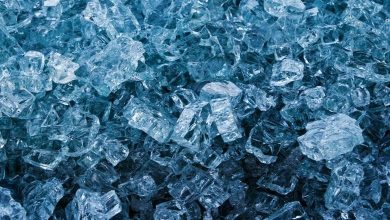
People spend around 6 hours and 42 minutes every day online. Suffice to say we have, as a whole, become reliant on the internet for so many things. Services, goods, information — we want it all, we want it at the tap of a button, and we want it now. But even though we’re heavy internet, not many of us consider how our connectivity is supported. That is, it’s physical presence.
Of course, the cloud isn’t actually a cloud. Huge data centres across the world keep our digital world connected and powered — the biggest of which reportedly consumes enough energy to power a city with a population of 1 million. These data centres are crucial for us to stream videos, download music, and post on social media. If they crash, sudden outages quickly spark irritation from customers, as British Airways found out in 2017 when a worldwide IT failure of their systems lead to flight cancellations and delays over a bank holiday weekend. The data centre failure was attributed by the CEO of British Airways to a power surge and a back-up failure, but UK Power Networks denied any power issues in the area that would have caused this.
Other sources speculate that overheating was the culprit. The British Airways data centres were built in the 1980s and were not built with today’s huge internet usage in mind. As a result, the building is not equipped to deal with the excessive heat generated by the modern data usage. Thus, the equipment shut down to protect itself from the heat.
Large-scale IT downtime is chaos for companies and users. Back in 2013, overheating shut down Microsoft’s data centre for a whopping 16 hours. So, what measures do the world’s biggest data centres take to ensure their servers don’t overheat?
The problem of heat
The use of energy creates heat as a waste product. According to Enerdata, the IT sector consumes around 5–9% of the world’s electricity. This is only set to grow as the world becomes more and more dependant on technology, with data centres set to need a fifth of the globe’s energy generation by 2025. As a result, there is a lot of pressure on IT companies to avoid the use of ‘dirty energy’ and commit to renewable energy; three tech giants have long since committed to 100% renewably powered internet (Apple, Google, and Facebook).
Data centres need to be able to run efficiently and sustainably. EkkoSense ran a study on 128 data centres in the UK and found 78% of them were running too hot. This means these data centres are, potentially, consuming too much energy or not using the energy efficiently. Plus, if overheating causes a complete shutdown of servers, this could impact users around the world.
Air conditioning’s role for data centres
The world’s largest data centres have a number of methods at their disposal to maintain their temperature. Obviously, commercial air conditioner systems are frequently used to maintain optimum temperatures. Daikin explains that a commonly used technique is to utilise heat recovery technology, which uses the heat expelled during the process of cooling to heat offices and water supplies. Another technique is to install a system that uses cold air from outside whenever possible, reducing the energy consumption of the air conditioning units as they switch off in the meantime. This is known as ‘free cooling’.
Harnessing nature
Microsoft and Google have turned to nature to look for ways to cool their data centres. In 2011, Google housed a data centre in a building in Finland that uses cold seawater to cool the facility. Prior to Google’s purchase of the building, it was a paper mill that had a massive tunnel constructed beneath it, running under the building and into the Gulf. The tunnel is now used to connect the seawater to their cooling system in a no-energy free-flow system, and the water is returned back to the Gulf cleaner than when it went in.
The Huffington Post noted how Microsoft went a step further and put a whole data centre into the ocean. The idea is, of course, the same — the cold seawater off the coast of Scotland will keep the centre cool. The project is touted to be powered by nothing but renewable energy and cooled by the ocean, so its impact on the environment is minimal.
Sources:
https://e360.yale.edu/features/energy-hogs-can-huge-data-centers-be-made-more-efficient
https://www.datacenterdynamics.com/news/overheating-brings-down-microsoft-data-center/
https://thestack.com/data-centre/2018/07/30/heatwave-data-centre/
https://www.daikin.co.uk/en_gb/solutions/infrastructure-and-data-centre-cooling.html
https://www.carbontrust.com/news/2012/10/six-drivers-for-the-development-of-green-it/



